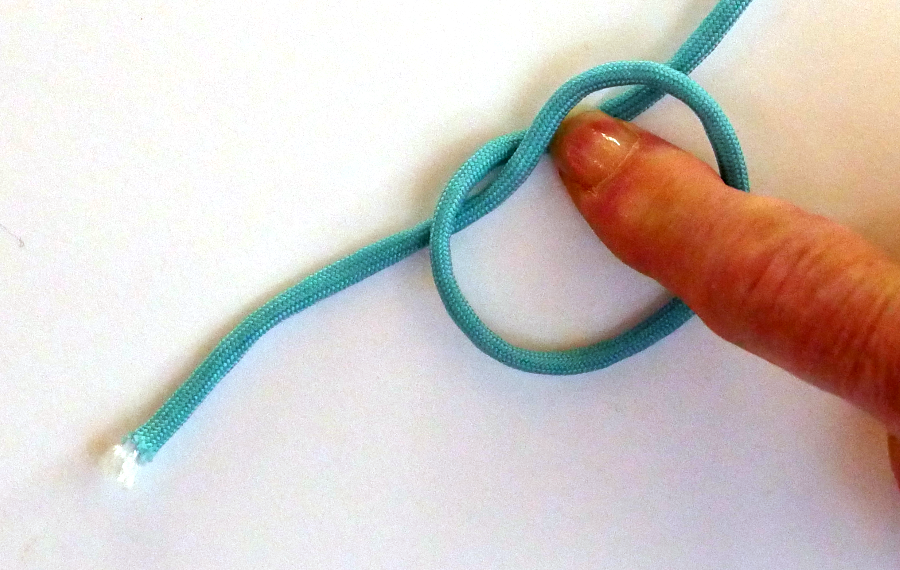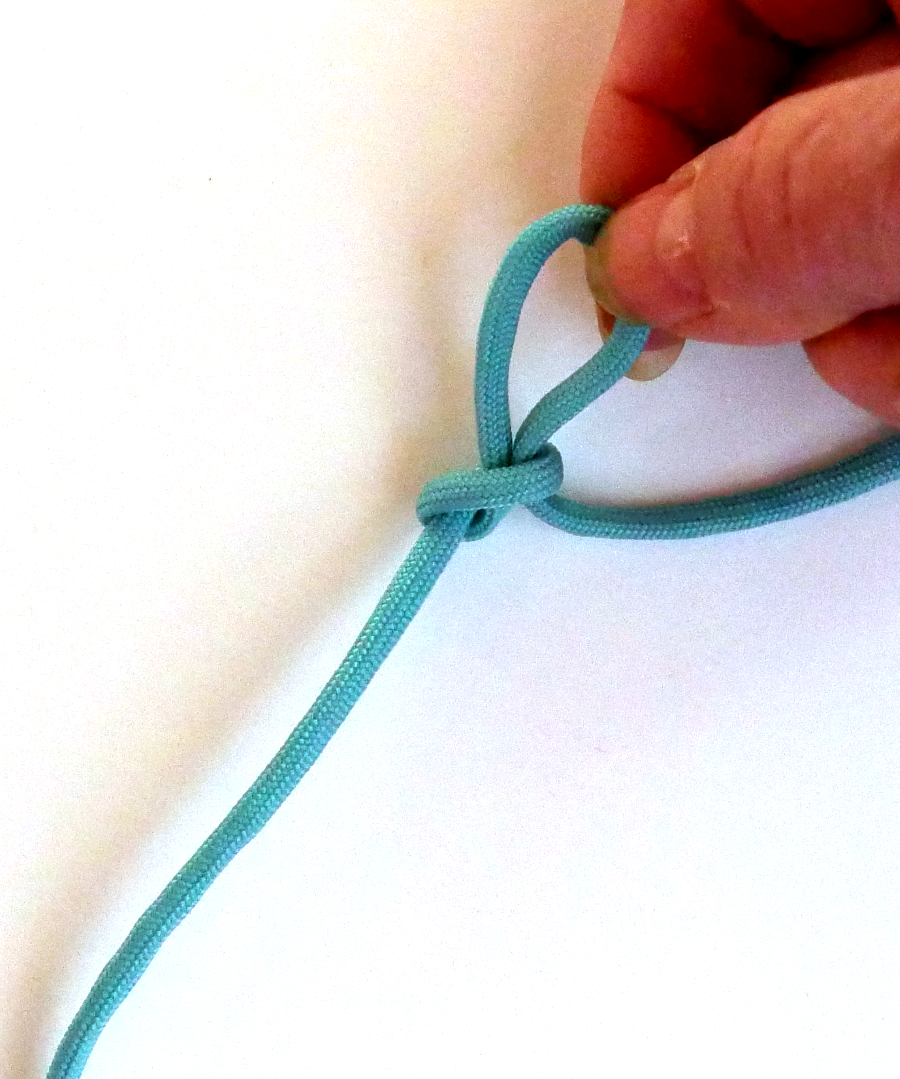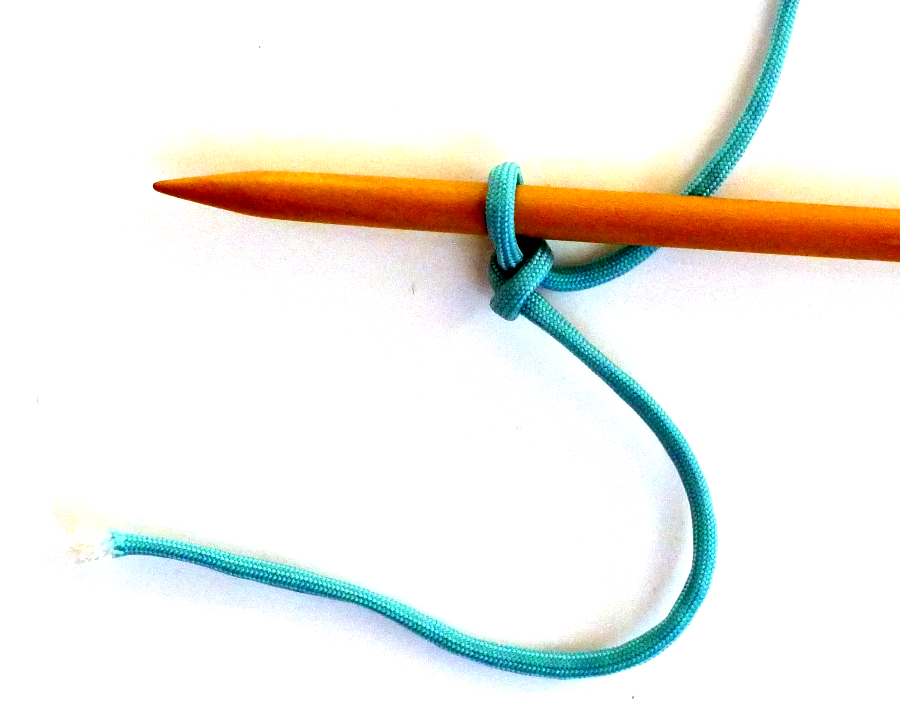Yes, there is a basic cast on that will work in many situations. Called the long
Yes, there is a basic cast on that will work in many situations. Called the long tail cast on (or two tail cast on), it uses two yarn ends, and produces a well spaced edge as well as one row of knitting. It is this row of knitting that stabilizes the edge and helps form a professional looking edge.
In order to knit, it is necessary to have some loops on the needle. Then process of putting loops on a needle in order to knit is called casting on. There is a wide variety of cast on methods. Choosing the right one for your particular garment requires a basic understanding of what is required.
 A slip knot is the most common start for a cast on edge. First a loop is formed by starting the yarn at roughly the nine o'clock position. Make a clockwise circle until the twelve o'clock position is reached. (I have used a very short tail for these pictures, eighteen inches would be a good length for your first slip knot.)
A slip knot is the most common start for a cast on edge. First a loop is formed by starting the yarn at roughly the nine o'clock position. Make a clockwise circle until the twelve o'clock position is reached. (I have used a very short tail for these pictures, eighteen inches would be a good length for your first slip knot.)  Then reach through the circle and grab the twelve o'clock yarn. Start pulling the loop of yarn through the circle.
Then reach through the circle and grab the twelve o'clock yarn. Start pulling the loop of yarn through the circle.  Completely pull the yarn through the circle forming a loop.
Completely pull the yarn through the circle forming a loop.  Hang that loop on the knitting needle. Be sure that the tail is on the front side of the needle with the working yarn to the rear as shown.
Hang that loop on the knitting needle. Be sure that the tail is on the front side of the needle with the working yarn to the rear as shown.Once the cast on is complete, this is what it should look like this with similar sized loops at the bottom of the needle. Usually casting on 70 or so stitches are enough to regulate those loops beneath the needle. In most knit items, that line is always visible. There is no way to fix any excess yarn in a loopy cast on. Really strive for an even cast on at this point!
Casting on is the hardest technique to remember because it is used infrequently as it takes time to do the actual knitting of the piece. I started every lesson by making the student cast on, and then tried to incorporate additional reasons during the lesson to cast on.
 I found the ideal number of stitches for the beginner to cast on was ten stitches. Rows were finished quickly, and problems with starting new rows show up in a timely fashion. (Yes there are 20 stitches shown so that you can better see an even cast on edge.)
I found the ideal number of stitches for the beginner to cast on was ten stitches. Rows were finished quickly, and problems with starting new rows show up in a timely fashion. (Yes there are 20 stitches shown so that you can better see an even cast on edge.)Is the edge highly visible? Do you need the edge to stretch at the same rate as the fabric? Do you need the edge to draw in? Do you need open stitches so that you can go back and pick up those open stitches? Answering these question will help you choose a method that will work for your garment. There are a wide variety of cast on techniques that can be learned.
Many patterns will tell you to cast on loosely. When I attempt to cast on loosely, I always end up with a floppy irregular looking edge. I have decided that cast on loosely is code for using a needle one size larger. I get a nice even tension and my looser cast on. I just need to remember to put that needle away and use the size needle that was intended!

